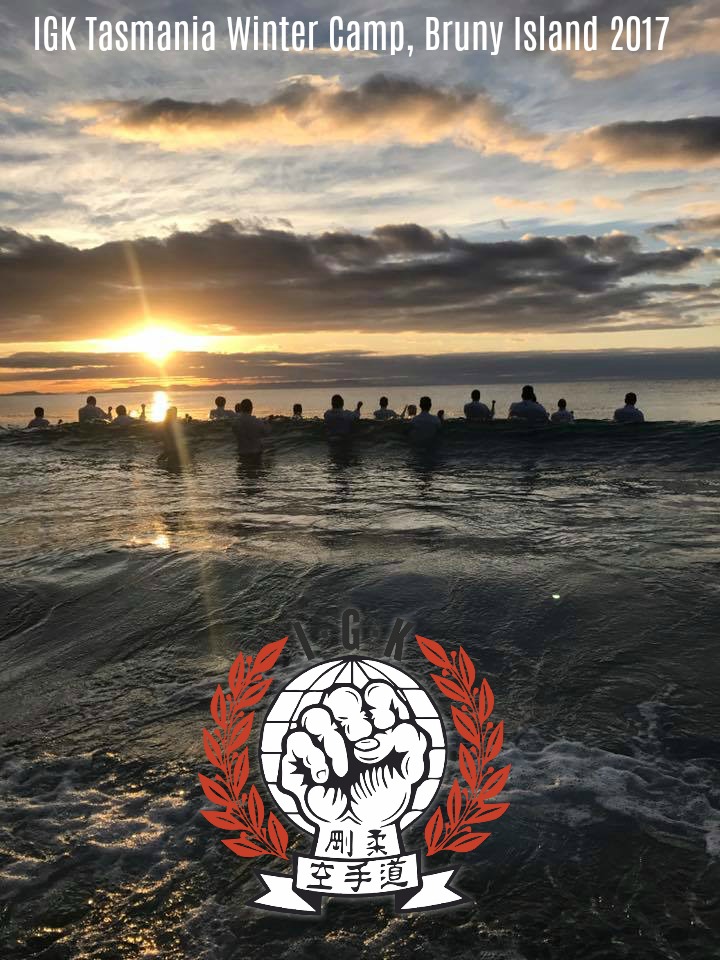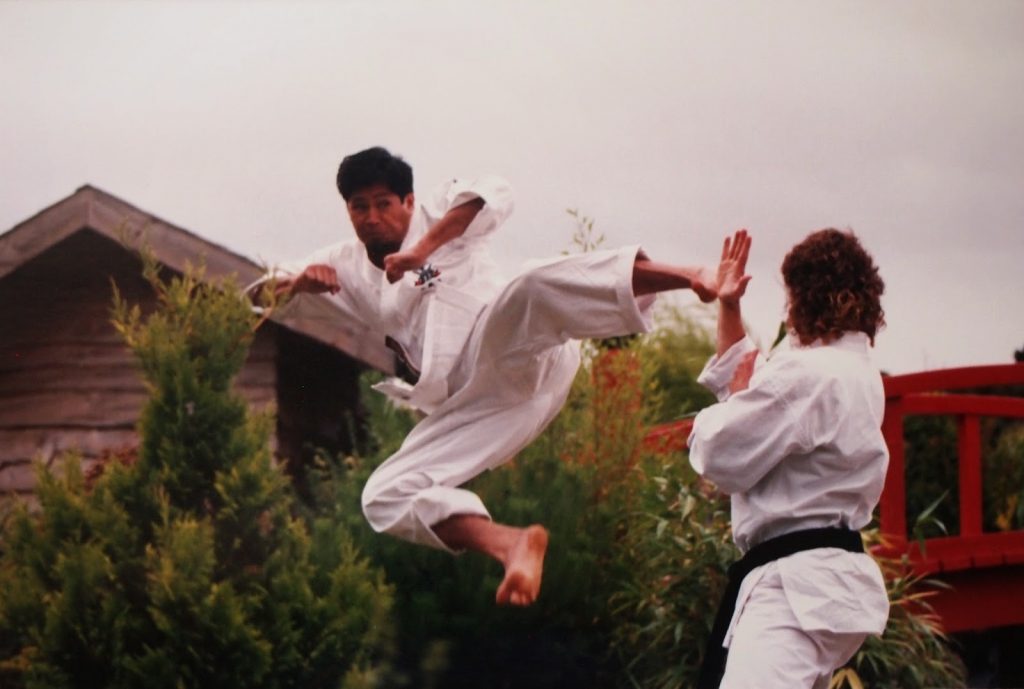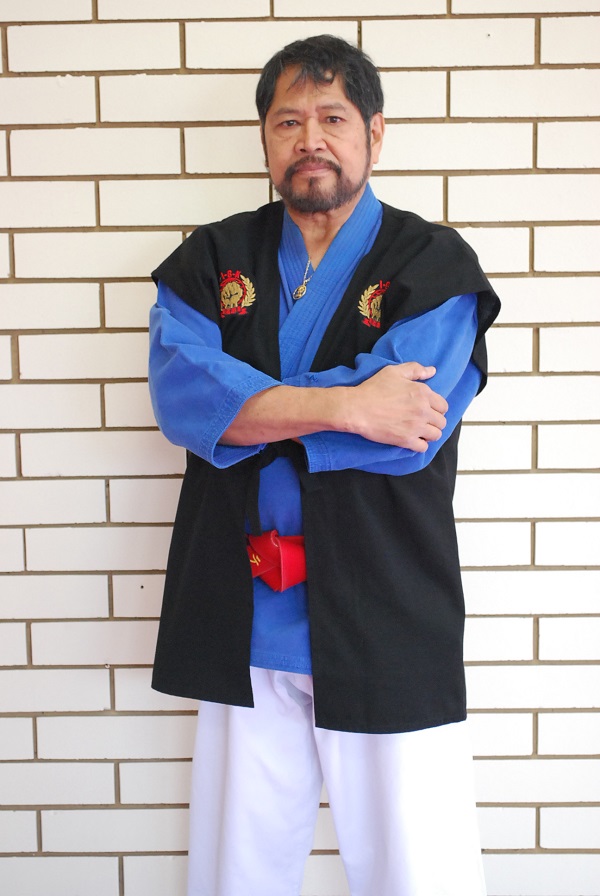Sanchin
 Three Battles an ideology that goes further than words spoken. The battles associate with the mind, the body, and the spirit. In battle the mind prepared as it may be, comes undone if not possessed with a motive conceived to handle any adversity.
Three Battles an ideology that goes further than words spoken. The battles associate with the mind, the body, and the spirit. In battle the mind prepared as it may be, comes undone if not possessed with a motive conceived to handle any adversity.
The physical body or portrayed strength be it static or active, has to be in top order of its call to answer the possible. Full compliment of skill, anticipation, strategy, and source of energy comes from a well tuned body in motion. A more concise wording put to this objective is C.O.R.E.– Consolidated Origin of Reserved Energy©.
The many different explanations and specifics to this form makes quite clear the reason for what the Founder of Goju stipulates in his directive to this study. That is to research, develop, and discover the attributes of such a powerful technology. The O.S.C.A.P….the features and the in-depth definitions.
Let me start with the O of Origin and concept. In the ancient study, records of how development of the body became difficult without several aides to locate strength i.e. weights and or devices of similar effect causing the body to relate to energy sustained or used as directed. Unbeknown to many the fear of what dictates immediate response comes from more than the physical conditioning.
Body mass does not change, but energy directed to enhance or bring to surface a remarkable change to what maybe regarded as dead weight. This in physiological terms puts logic to an overload to isolated areas or the entire body as a whole.
This then is the logic of isolation to energy in a given task. This energy is direction and intent. It brings stable tolerance which is the source of endurance, it manages the threshold effect of staying whilst being in control, and in the terms of power engagement, its exactness explains timing, accuracy, and speed.
While the exactness of its origin does not designate any specific time or location, this study exist with the Kungfu practice of the Hungar style. The many styles of other combative systems be it the Pak Qua, Choi li Fut, Taiji Chuan…others and most recently as discussed and experienced, Boxing.
Though history of this form sources its links to the area that locates the Chinese Kungfu of Hungar other systems maybe equally responsible, hence recognition of its fundamentals is shared to these systems.
The concept to this study brought many years of research and in-depth study bringing results of experience with major break through unimaginable but realistic attributes. These experience will now be disclosed as science in learning creating further reason why this fundamental form exist and must be set in precedent of learning oneself.
In the S Science of study lets begin with the position or structural form as representing the hour glass. Initial position of standing upright starts effectiveness of stable strength.
As alignment to measure as with the engineers aide to measuring by way of exactness… his tripod set up with the measuring devise of calculating distancing etc. firstly in its firm stance even as a plumb bulb acting as the stableness of the tripod hold in place. The body appropriately placed in what is called the hour glass stance the feet placed in three point based position similar to that of a tripod.
The forward foot at a one step position, as wide as the shoulder width spread, and with the forward heel turned out slightly as in creating an anchor point of the forward position. The back foot remains in place sturdy and anchored in equal weight distribution to the front foot.
The centre between the legs becomes the key of which imaginarily placed is the plumb bulb that gives the alignment effect as what becomes engaged now the features of the body in parts making this strength related exercise a marvel to Physics.
Let me explain that contraction as in integration of condensed muscular effect or simply like practicing isometric form will create a significant form of mass in principle, compounding energy to a maximum solid.
Firstly the foot placed as in a gripping effect of an inner collapse against a circular base starts the isolation of muscular re-enforcement.
The ankle holds fast, the calve muscles contract, the larger muscles of the quads and the hamstrings contract in a solid support factor. The movement as its isolation ascends to the mid part of the body now locking in the lower torso as from the muscles of the gluteus or the buttocks uplifting as in a fold to tighten the lower abdominal region.
Note: from this section as will be explained causes the lower half of the body in securing the strength based foundation of body density to added weight.
Secondly commencing from the lower back, the contraction of the gluts tucks upward creating an erect form of the spinal column, as in aligning a straight form to the back of the skull or cerebellum. This formation now starts the upper feature of the body in what will be experienced a feeling of strength related formation to an effect or strength of a different kind.
Note: as will be explained the topic of the ‘three battles’ very significant to the esthetics in martial art training from the traditional and classical art.
Continuing from there now places both arms in a clenched fist forms in the frontal position as in a semi curl fold – the fist at shoulder level, elbows tucked in secured and aligned with the side of the body. With the fist clenched held naturally, the tightness of the wrist, moving on to the forearms, the biceps and the chest muscles or pectoral muscles now have immediately tightened up with just three more parts of the body features to follow.
The head being tucked back in a rigid upright form now produces an effect on the shoulder muscles known as the trapezes in tightening. In a state of contraction in all these featured isolation to muscle activity the strength forming bases of contraction is imminent. Re-enforcement to energize is concrete.
Thirdly as in securing the completion to formalize and bring a new element of control in the performance, breathing in depth to understanding diaphragm breathing and what is then transposed in to a direction energy that now brings clarity to the ‘C.O.R.E.’ Consolidated Origin of Reserved Energy.
Course of rudimental progression…notably in the training style of the Goju practitioner is that of the 3 battle stance (hourglass or sanchin dachi) formulated to take precedent of the upright stance.
This is followed by the walking pattern of the forward or reverse stepping giving the exercise depth of sensitivity by way of surface feeling the foot placement and locking in to secure stability. This is usually exercised with the positioning of the arms both or singular in the middle parrying form (yoko uke or chudan uke}.
The punching thrust to the mid section is performed strongly with the isolation of muscle contraction from the clenched fist formation to the anchor points, the shoulder muscles down to the lats fully formed. Exactness to practicing the rhythm of the breath is that of isolation of muscular contraction.
Difficulties will arise as this strange but very dynamic way of creating unknown strength becomes much as a memory muscle retention. Done for specifics in locating the C.O.R.E.
Attributes…the foundation of understanding is in the use and what faculties thus contain the manner of proof in acquisition of skills.
This is provided by the progressive exercise to isotonic and iso kinetic measures in sports application. The Science of the Goju practice hence is discovered to be more than the physical nature of form training but interior functions to master in this complex exercise.
Strength measuring is evident by certain training format and upon mastering this significance to a change will occur to what is the control element.
Propagation and continued study…It was meant to be that the intrigue of this form SANCHIN is to be a key to mastering the principles of the Goju Study. Its complexity, its initial trail in the study of its physiological traits and features, its location of an important power source gives bearings to a life long study. This then is the aesthetics to the Martial Arts study.
– Written by Hanshi Tino Ceberano 2011



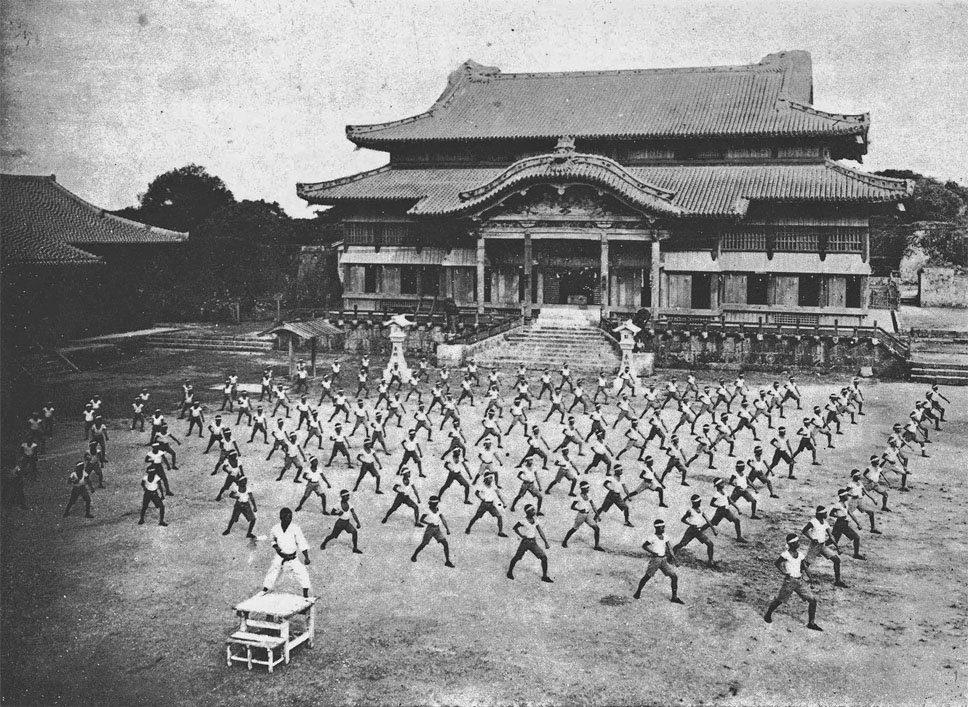
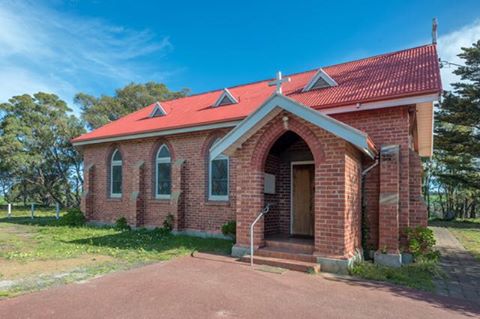
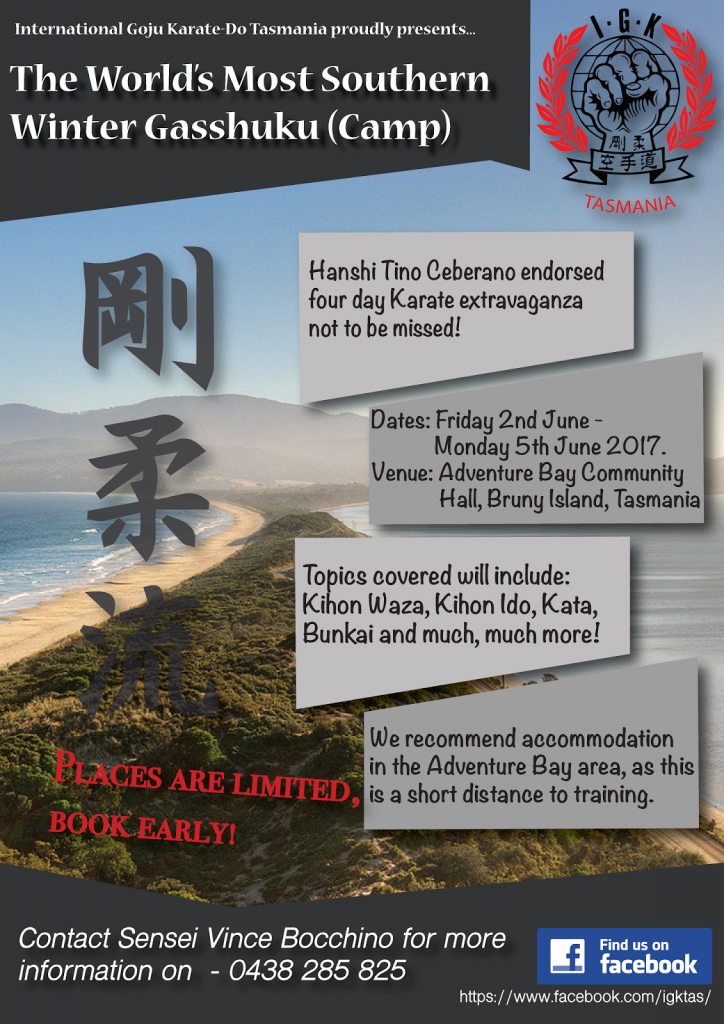 IGK Tasmania will be hosting a Winter Gasshuku (Camp) at Bruny Island from Friday 2nd June until Monday 5th June 2017.
IGK Tasmania will be hosting a Winter Gasshuku (Camp) at Bruny Island from Friday 2nd June until Monday 5th June 2017.